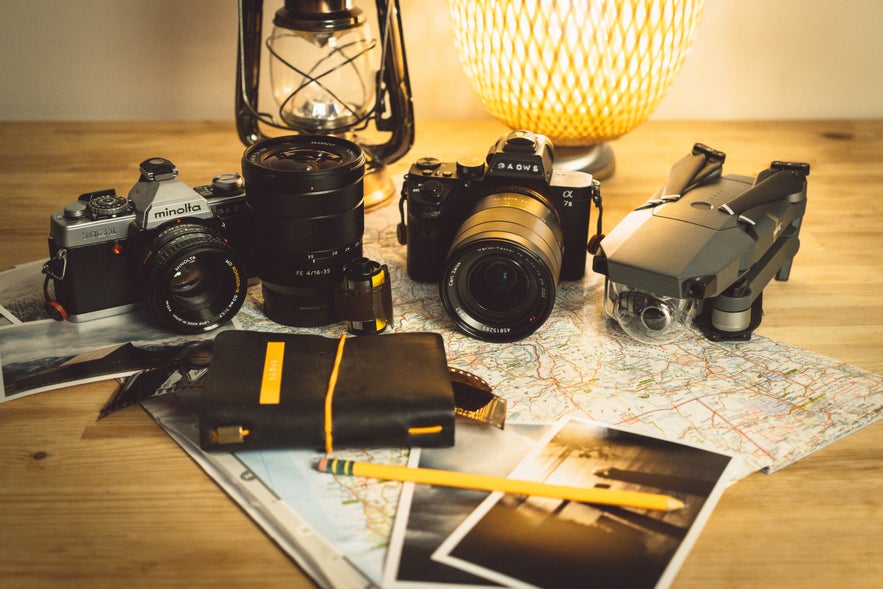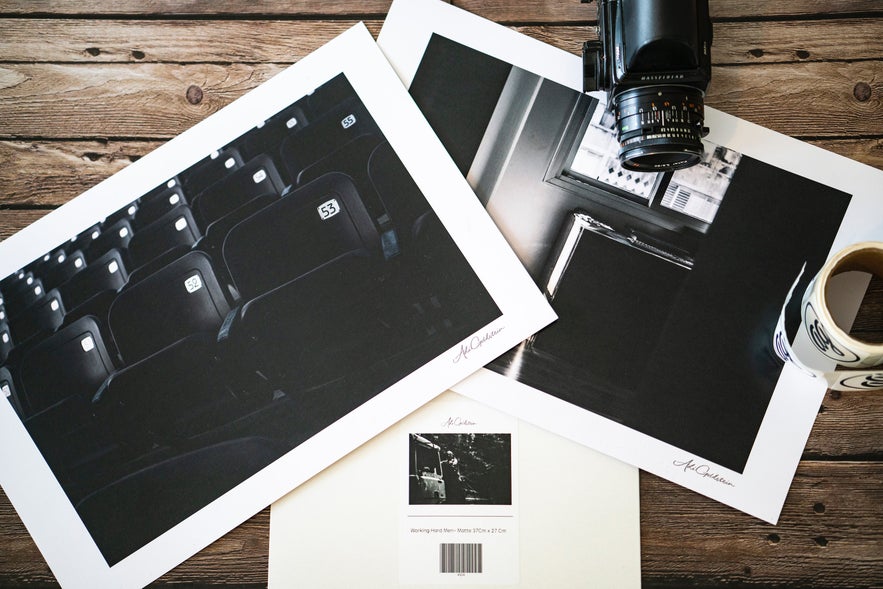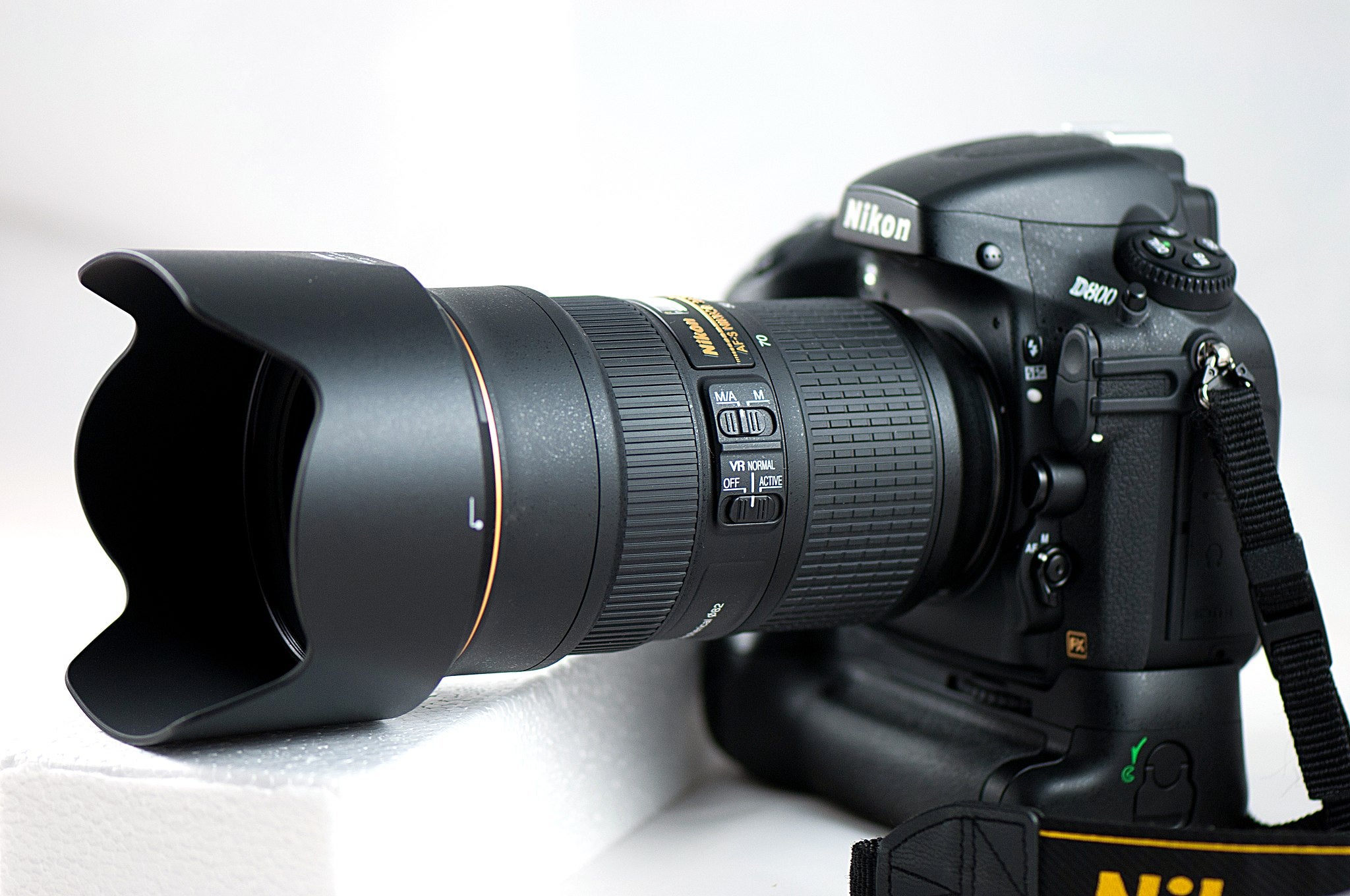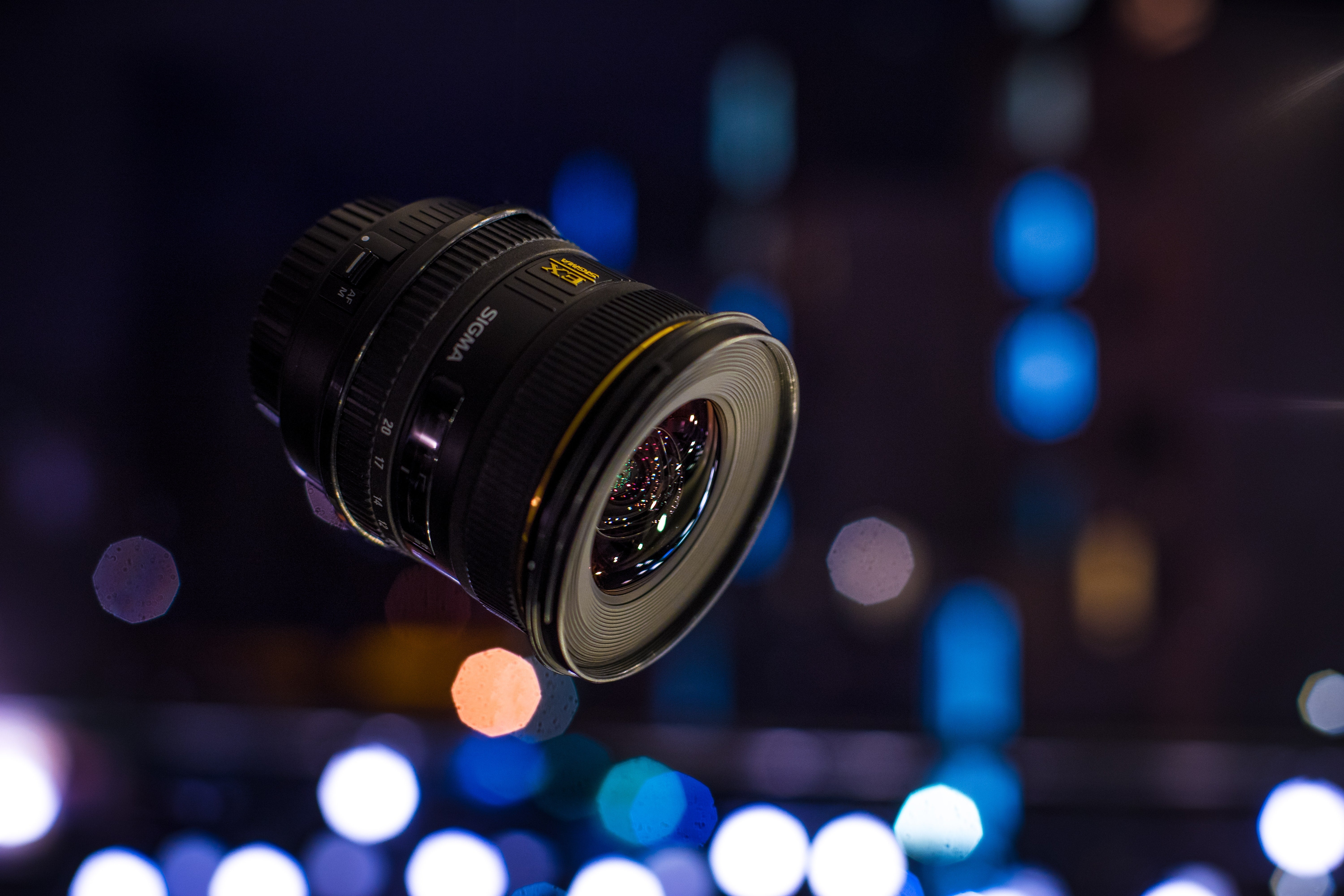
There is something incredibly satisfying about seeing your photos printed up large and hanging on the wall. It’s a great way to show off your photography skills and memories of particular moments in time. Not only that but if you’re in need of some inspiration, then seeing your photos displayed around your home on a daily basis might just do the trick, particularly if you’re stuck indoors with nowhere else better to go.
- Explore these Camera & Gear Reviews
- Check out the Beginner's Guide to Selling Photography Prints
- Join us on this 2 Day Snaefellsnes Peninsula in Winter Photography Tour
Printing your photographs can also add value to your images and is a wonderful way to share your work with others, as well as to make money as a photographer. You can sell prints online, to galleries and even restaurants or cafés which might be in need of some wall art.
So how can you get started with printing photographs? Is it even possible to print your own photos at home and where do professional photographers go to get their pictures printed?
 You can print your photos at home or get them done at a professional photo lab. Photo by: 'Unsplash'.
You can print your photos at home or get them done at a professional photo lab. Photo by: 'Unsplash'.
When it comes to printing your work, there are two main options to consider: home printing or getting your photographs printed at a photo lab. These days, it’s possible to achieve high quality picture prints with both, though each has its own virtues.
In this beginner’s guide to home versus lab printing, you can find out everything you need to know in order to achieve the best quality when it comes to printing your photos!
Home Printing
Some photographers say that home printing is for the lazy or introverts who don’t want to make the trip out to a photo lab. In truth, there is nothing lazy about it. In fact, it’s the more complex and expensive option for printing your photographs.
 Home printing is more complex than it seems! Photo by: 'Unsplash'.
Home printing is more complex than it seems! Photo by: 'Unsplash'.
To get started making your own professional photo prints, you’ll need to invest in a good home printing system. This includes having a reliable printer, print cartridges and high quality photo paper.
The Printer
There are two common types of printers that people often use at home – inkjet and laser. Both can print colour photographs, though the quality, performance, durability and costs may vary widely between the two.
 A good printer will result in higher quality prints. Photo by: 'Unsplash'.
A good printer will result in higher quality prints. Photo by: 'Unsplash'.
Inkjet printers are usually more affordable than laser printers. These types of printers feature a print head that sprays liquid ink from a print cartridge onto paper.
On the other hand, laser printers have a print head that consists of a laser in combination with components that produce positive and negative electrical charges. Instead of using ink, laser printers use powdered toner which is melted by heat to form printed images.
 A laser printer can print more quickly, which is great if you need to produce a high number of prints. Photo by: 'Unsplash'.
A laser printer can print more quickly, which is great if you need to produce a high number of prints. Photo by: 'Unsplash'.
For professional quality prints, it’s best to invest in a wide-format printer which will enable you to print on paper of a larger size than just A4.
Print Cartridges
Most inkjet printers require at least two print cartridges containing liquid ink to work – one that is black and one which contains three colours, namely magenta, yellow and cyan. Together, these cartridges are able to produce a wide variety of colours to suit your images. Some inkjet printers require even more print cartridges, with each containing a different colour to create the best results.
 Multiple ink cartridges in a LaserJet printer. Photo by: 'Unsplash'.
Multiple ink cartridges in a LaserJet printer. Photo by: 'Unsplash'.
In comparison, laser printers use cartridges of toner powder. This powder consists of small particles of plastic and iron; it is much cheaper than ink, meaning that although laser printers may be more expensive to purchase, they are generally less expensive to run than their inkjet counterparts.
- See also: A Brief History of Photography
Photo Paper
Chances are that you won’t want to print your images onto normal run-of-the-mill paper that can be found in a photocopier. Photo paper is specifically designed to bring a higher aesthetic to printed photographs, balancing quality with good visual output.
 There are many different types of photo paper on the market. Photo by: 'Unsplash'.
There are many different types of photo paper on the market. Photo by: 'Unsplash'.
When purchasing photo paper, it is important to understand that there are differences between papers which are made specifically for inkjet printers and paper which can be used in a laser printer. While both types of printers can take 80-100gsm paper, inkjet printers can print on thicker papers than laser printers. Meanwhile, feeding special inkjet paper to a laser printer can cause problems, as the paper is not designed to withstand the heat generated by the laser. To prevent any damage occurring to your printer, it is best to do your research into photo papers to make sure that they match the printing system that you’ll be using.
 Different photo papers suit different styles of photography. Photo by: 'Unsplash'.
Different photo papers suit different styles of photography. Photo by: 'Unsplash'.
High quality photo paper is widely available in most office supply stores worldwide so that you can easily print your pictures at home. Whether you’re after a glossy, premium fine-art or matte finish, you’ll likely be able to find many different media types in an array of sizes and weights for a decent price.
- See also: Beginner's Guide to Camera Settings
The Best System for Printing Photos at Home
While laser printers are capable of printing at much faster speeds than inkjet printers, professional printers for photographers are usually of the wide-format inkjet variety. This is because they generally do better at printing in colour than laser printers do and unlike their counterparts, they can print on glossy paper.
 Displaying your prints at home can give you inspiration. Photo by: 'Unsplash'.
Displaying your prints at home can give you inspiration. Photo by: 'Unsplash'.
Two of the most popular professional wide-format printers on the market are the Canon PIXMA Pro 9500 Mark II and the Epson Stylus Pro R2880. Both cost around $800 USD, though Canon sometimes offers cash-back rebates on purchases which you should definitely take advantage of if you are presented with the chance. This can significantly lower the start-up cost of investing in a home printing system, meaning that you’ll have more money to spend on purchasing high quality ink.
 Home printing is great when you want to see results straight away. Photo by: 'Unsplash'.
Home printing is great when you want to see results straight away. Photo by: 'Unsplash'.
Both of these Canon and Epson printers are able to produce high resolution professional photo prints with a great finish. They can take almost any type of paper up to 13x19” in size, meaning that you’ll be able to print big but not massively.
Things to Consider with Home Printing
Before you head out to purchase the best set-up that you can find for printing your photos at home, there are a few key things that you’ll need to consider.
 Printing at home can get expensive. Photo by: 'Unsplash'.
Printing at home can get expensive. Photo by: 'Unsplash'.
First of all, print cartridges – especially of the ink variety – do not come cheap. While you may make some initial savings when buying a printer, the cost of replacing the print cartridges can skyrocket quite quickly if you want to make a lot of prints.
 Do you have space for a printer as well as to hang your prints at home? Photo by: 'Unsplash'.
Do you have space for a printer as well as to hang your prints at home? Photo by: 'Unsplash'.
Second, a professional wide-format printer can take up a lot of room. Do you have the space for it at home and thinking realistically, how often will you be using it? If you’re only going to be printing once or twice a year, then it’s probably not a good idea to have it sitting around gathering dust. Inkjet printers are prone to ink clogging when left for long periods between uses. Fixing this takes up a lot of ink in addition to the ink that is wasted with cleaning cycles, which can certainly place a hole in your pocket.
 Printing at home gives you creative control. Photo by: 'Unsplash'.
Printing at home gives you creative control. Photo by: 'Unsplash'.
However, there are a few conveniences associated with printing at home. Most professional home photo printers have replaceable ink heads and are incredibly durable, so chances are that they will last you for a long time. You’ll also have the ability to calibrate the printer to match the colours of your monitor, meaning that what you print will be a better reproduction of what you see on screen. Of course, this goes hand-in-hand with carefully preparing your images for print, so it’s important to think about whether you have the time to do so.
Perhaps the best thing about having a printer at home is that you won’t need to go anywhere other than taking a few steps in order to make a print. This can save you a lot of time, especially if you are on a tight schedule or don’t live anywhere near a photo lab.
 Weigh up the costs versus convenience when you consider purchasing a home printer. Photo by: 'Unsplash'.
Weigh up the costs versus convenience when you consider purchasing a home printer. Photo by: 'Unsplash'.
Given the expenses and limitations that can arise from printing at home, it’s important that you weigh up the costs versus the convenience before rushing into anything. Keep in mind that a home printer can only produce smaller prints up to a certain size. If you want something larger than A3 to display on your wall, then you’ll need a large-format printer which will be far more expensive to purchase and difficult to find a space for at home.
Professional Lab Printing
Photography is a time-consuming venture. If you don’t have the flexibility of schedule or money to invest in a home printing system, then sending your work to a professional lab for printing is a fantastic solution.
 Printing in a photo lab can give you more professional results. Photo by: 'Unsplash'.
Printing in a photo lab can give you more professional results. Photo by: 'Unsplash'.
As we touched on earlier, large photo printing is virtually impossible to do at home unless you possess the proper equipment. Using a professional photography printing lab gives you the opportunity to produce larger prints or to print in unusual sizes that you wouldn’t normally be able to do easily with a home printer.
 Photo labs have access to large format, high quality printers. Photo by: 'Unsplash'.
Photo labs have access to large format, high quality printers. Photo by: 'Unsplash'.
Going to a print shop also means that you’ll be able to choose where you want to print. While the quality of printing can vary across labs, most use the latest technology in printers with all of their equipment being fully calibrated. You can read reviews about print labs online or speak with other local photographers to get an idea of where the best place is for printing in your area.
 Professional printers are experienced in their field and can give you all the advice that you need. Photo by: 'Unsplash'.
Professional printers are experienced in their field and can give you all the advice that you need. Photo by: 'Unsplash'.
One great thing about taking your work to a professional photo lab is that the staff have likely prepared work for all sorts of sectors, from commercial purposes to exhibitions, weddings and more. As such, they’re a wealth of advice which you can tap into if you’re a beginner to printing. You can seek assistance with preparing your images for printing according to the medium that you want to print on. In addition, you'll find many more mediums in a lab than you’ll likely be able to print on at home, including canvas prints, metal, wood, rare and hard to source archival photo papers. If you’re not sure which is best for your particular photograph, then you can get expert advice on image sizing, paper weights and finishes.
 You can print on canvas as well as a variety of other mediums when using a professional print lab. Photo by: 'Unsplash'.
You can print on canvas as well as a variety of other mediums when using a professional print lab. Photo by: 'Unsplash'.
On top of all of that, professional photo labs are highly efficient businesses that purchase inks and papers in bulk. This lowers the cost of printing which is often reflected in price lists. Some print labs even offer discounts or promotions on bulk print jobs, which can be useful if you need a lot of prints done in a short period of time.
Things to Consider with Lab Printing
 There will be less work for you when you pay a professional print lab to do it for you. Photo by: 'Unsplash'.
There will be less work for you when you pay a professional print lab to do it for you. Photo by: 'Unsplash'.
When printing at home, you’ll have the benefit of being able to print whenever you want, which includes getting up in the middle of the night and printing in your pyjamas. This type of flexibility is perhaps one of the biggest trade-offs that you’ll have to make when sending your work to a lab for printing. Oftentimes, print labs have a queue of customers to service, meaning that unless you pay for a faster turnaround time, you could be waiting for up to a week or more to receive your prints.
 You may need to make a few trips to and from the photo lab. Photo by: 'Unsplash'.
You may need to make a few trips to and from the photo lab. Photo by: 'Unsplash'.
Aside from this, you’ll either need to transport your files to the print lab in person or send them electronically. This can be tedious, particularly if you need assistance with preparing your files for printing. Unless you trust the print lab completely, then you’ll likely want to preview any changes that are made before the image is sent off to print. Sending files back and forth or making multiple trips to the lab can be time-consuming. Not only that but you’ll also have to pick up your prints when they are completed – that is, unless you pay to have them mailed to you.
Conclusion
Creating prints to display around your home or to sell can be an incredibly rewarding experience. While it may be easier and more convenient to do your own printing at home, having your photographs printed at a photo lab may result in better quality and more versatility. Understanding the expenses and limitations involved with each process will allow you to make an informed choice when it comes to printing your photos. Good luck and happy printing!
About the author: Serena Dzenis is a landscape photographer based in Iceland. You can find more of her work on her website or by following her on Facebook and Instagram.
Do you prefer to keep your photos on your computer or to have them printed? Is there a particular print lab that you like or which you return to for the quality of prints that they produce? Have you ever tried printing your own photos at home? Share your thoughts by leaving a comment below!












